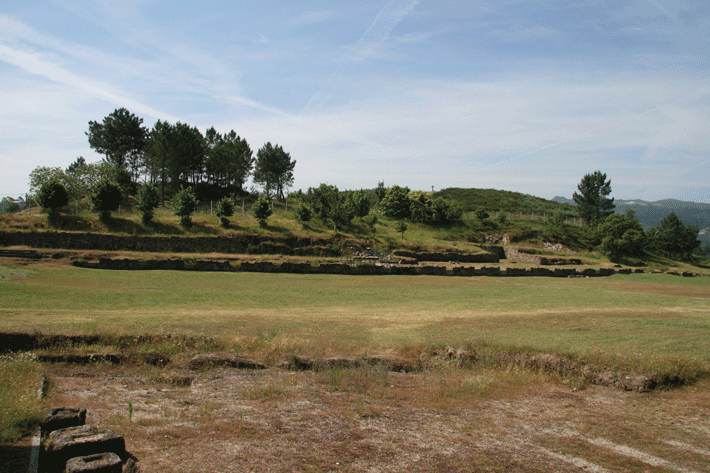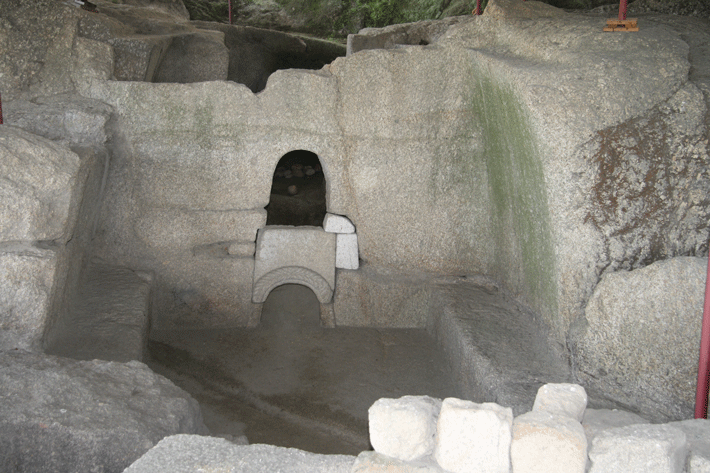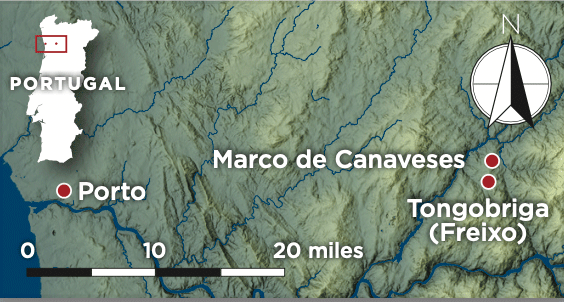Off the Grid
Tongobriga, Portugal
January/February 2023
 The small hilltop village of Freixo, Portugal, is an unassuming place. A single-lane stone-paved road runs through the heart of the settlement, where a dozen or so buildings spread out from a quaint church square. It is hard to imagine that 1,800 years ago, this was the location of Tongobriga, one of the largest Roman towns in northern Portugal, whose ancient population of 2,500 dwarfs the tiny number of residents today.
The small hilltop village of Freixo, Portugal, is an unassuming place. A single-lane stone-paved road runs through the heart of the settlement, where a dozen or so buildings spread out from a quaint church square. It is hard to imagine that 1,800 years ago, this was the location of Tongobriga, one of the largest Roman towns in northern Portugal, whose ancient population of 2,500 dwarfs the tiny number of residents today.
 By the late twentieth century, much of the site’s past had disappeared beneath farmland, and stones that had once belonged to Roman buildings had been carted off to be used in new construction. The site’s forgotten history only began to be revealed in 1980, when archaeologists investigated an ancient wall that locals referred to as the “chapel of the Moors.” This wall turned out to be part of an extensive Roman bath complex. As excavations continued, archaeologists unearthed a sprawling Roman town that extended across 75 acres. They even learned its name, Tongobriga, from an inscription previously found at the site.
By the late twentieth century, much of the site’s past had disappeared beneath farmland, and stones that had once belonged to Roman buildings had been carted off to be used in new construction. The site’s forgotten history only began to be revealed in 1980, when archaeologists investigated an ancient wall that locals referred to as the “chapel of the Moors.” This wall turned out to be part of an extensive Roman bath complex. As excavations continued, archaeologists unearthed a sprawling Roman town that extended across 75 acres. They even learned its name, Tongobriga, from an inscription previously found at the site.
In the late first century A.D., about 100 years after the Romans had completed their conquest of the Iberian Peninsula, Tongobriga became an important regional administrative center. Befitting a town of its status, the city was laid out on a precisely gridded street plan with neighborhoods of Roman-style houses featuring atriums, as well as a theater, an amphitheater, and a large forum.
More recent excavations have revealed that the settlement’s history goes back even further. Prior to its Roman occupation, the site was inhabited by an Iron Age Celtic people known as the Castro culture. The Castro people lived in round stone houses, many examples of which have been uncovered beneath the ruins of the Roman town. These pre-Roman people left behind little to betray their presence apart from an Iron Age bath facility they carved out of the bedrock. As archaeologists continue to excavate at the site, they have come to believe that the Iron Age settlement was also quite significant, boasting a population of up to 2,000 people.
 THE SITE
THE SITE
Tongobriga is easily reached from the city of Marco de Canaveses, which is located around two miles to the north. The highlight of any visit to the site is the exceptionally large Roman forum, which is bordered by the foundations of various commercial, religious, and administrative buildings. Along the forum’s north side, visitors can admire the Iron Age bath facility as well as the adjacent ruins of the Roman-era bath complex, which included a large swimming pool. During a stroll through the village of Freixo, the remnants of both Roman and pre-Roman houses can be seen lining the road. There is also a small interpretive center, which houses an exhibit examining how integration into the Roman Empire changed the lives of the area’s Indigenous population.
WHILE YOU’RE THERE
Tongobriga is located in the Douro Valley wine country. Several nearby vineyards along the well-touristed Rota dos Vinhos specialize in the local vinho verde and are open for visits and tastings.